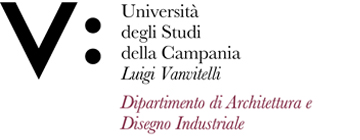Carlo COPPOLA
Insegnamento di LABORATORIO DI INTERIOR DESIGN
Corso di laurea in DESIGN E COMUNICAZIONE
SSD: ICAR/16
CFU: 12,00
ORE PER UNITÀ DIDATTICA: 96,00
Periodo di Erogazione: Secondo Quadrimestre
Italiano
| Lingua di insegnamento | ITALIANO |
| Contenuti | L'obiettivo del laboratorio è fornire agli studenti la conoscenza della percezione degli spazi interni e del loro aspetto funzionale attraverso gli strumenti logici e descrittivi atti ad interpretare i processi di formazione dei progetti e rappresentarli all’interno di un sistema di regole e di riferimenti che costituiscono una vera e propria ontologia formale. Questi strumenti consentiranno quindi di implementare dei ragionatori capaci di produrre risultati omogenei tramite algoritmi d’intelligenza artificiale che lavoreranno sia all’interno sia trasversalmente ai vari domini disciplinari, che costituiranno dei veri e propri processi di progettazione descritti attraverso forme di rappresentazione. Parallelamente si dovranno interfacciare le procedure di rappresentazione grafica (disegno, modellazione, renderizzazione, ecc.) con i ragionatori informatizzati per consentire la illustrazione degli esiti dei processi di progettazione realizzati.Le tappe del nostro lavoro sono le seguenti: |
| Testi di riferimento | - Carlo Coppola, Le logiche degli Artefatti, in via di pubblicazione |
| Obiettivi formativi | Il fine di questo corso è quello di offrire un metodo di progettazione non convenzionale. |
| Prerequisiti | Conoscenza delle procedure di programmazione 3D avanzate con esperienza di script (Rhino, Grasshoper, Maya), dei programmi per la rappresentazione delle ontologie formali (Protegè) e per la programmazione algoritmica (Pyton). |
| Metodologie didattiche | Esperienze di analisi collettive e sintesi per gruppo, con approfondimenti individuali di temi di dettaglio. Lezioni teoriche generali con esercitazioni tematiche individuali. Lavoro per gruppo di sintesi sulla elaborazione di un progetto esemplificativo. |
| Metodi di valutazione | Prove intercorso e discussione finale sul progetto esemplificativo. |
English
| Teaching language | Italian |
| Contents | The laboratory deals with defining the logical and descriptive tools for interpreting the processes of project formation and representing them within a system of rules and references that constitute a real formal ontology. These tools will therefore allow the implementation of reasoners capable of producing homogeneous results through artificial intelligence algorithms that will work both internally and transversally to the various disciplinary domains, which will constitute real design processes described through forms of representation. At the same time, graphic representation procedures (design, modeling, rendering, etc.) must be interfaced with computerized reasoners to allow the illustration of the outcomes of the design processes implemented. The stages of our work are as follows: |
| Textbook and course materials | - Carlo Coppola, Le logiche degli Artefatti, in via di pubblicazione |
| Course objectives | The purpose of this course is to offer an unconventional design method. |
| Prerequisites | Knowledge of advanced 3D programming procedures with script experience (Rhino, Grasshoper, Maya), programs for the representation of formal ontologies (Protegè) and for algorithmic programming (Pyton). |
| Teaching methods | Collective analysis experiences and group synthesis, with individual in-depth analysis of detailed topics. General theoretical lessons with individual thematic exercises. Work by synthesis group on the elaboration of an example project. |
| Evaluation methods | Intermediate tests and final discussion on the example project. |








